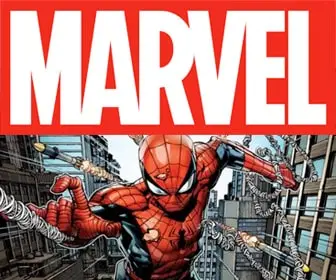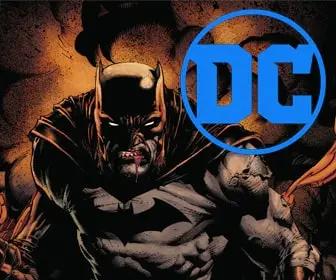
Mastering the Art of Comic Book Storytelling

Storytelling is at the heart of every good comic book. Comics combine words and pictures to create exciting stories that capture our imagination. Unlike movies or novels, comic books use a mix of art and text to tell their tales. This unique blend makes them special and allows for creative ways to share stories.
Good storytelling in comics keeps readers hooked. It makes them care about the characters and what happens next. Whether it’s a superhero saving the day or a detective solving a mystery, the story needs to be strong and engaging. In this article, we will explore the key elements that make a comic book story great.
Strong Characters
Strong characters are the foundation of a great comic book. Readers need to connect with the characters to care about the story. To make characters interesting, they should be multi-dimensional. This means they have different sides to their personalities, just like real people.
Characters should also grow and change throughout the story. This is called a character arc. For example, Spider-Man starts as a regular teenager, but he learns to be a hero after getting his powers. This growth makes his story more interesting.
Relatable characters help readers see themselves in the story. Even if the character is a superhero, they should have human traits like courage, fear, or kindness. Batman, for example, is strong and smart, but he also has a tragic past that drives him.
Great comic books give their characters challenges to overcome. These challenges help the characters grow and keep the story exciting. Characters like Wonder Woman face many obstacles, but they use their strength and wisdom to overcome them.
In summary, strong characters are crucial for a compelling comic book story. They need to be complex, relatable, and capable of growth. When readers care about the characters, they become more invested in the story.
Engaging Plot
An engaging plot is essential for a good comic book. The plot is the sequence of events that make up the story. It needs a clear beginning, middle, and end to keep readers interested.
At the beginning of the story, introduce the main characters and setting. This helps readers understand where and when the story takes place. For example, in the comic “The Flash,” we learn about Barry Allen and how he becomes the fastest man alive.
The middle of the story is where most of the action happens. The characters face challenges and obstacles. These challenges make the story exciting and keep readers on the edge of their seats. In “The Avengers,” the heroes face many battles and work together to stop the villains.
The end of the story is where everything comes together. The characters overcome their challenges and the plot reaches a resolution. This is also where the characters might show growth from their experiences. For instance, in “Batman: The Dark Knight Returns,” Batman comes out of retirement to save Gotham City and proves that he is still a hero.
Pacing is also important in a plot. This means balancing action scenes with quieter moments. Too much action can be overwhelming, and too many quiet scenes can be boring. A good comic book keeps a balance to maintain excitement.
In summary, an engaging plot has a clear structure, exciting challenges, and a satisfying resolution. It keeps readers hooked from beginning to end. When the plot is well-paced, it makes the story even more enjoyable.
Visual Storytelling
Visual storytelling is what makes comic books unique. The artwork in a comic book helps tell the story along with the words. Good visual storytelling uses pictures to show action, emotion, and setting.
Artists use panels to organize the story on each page. Panels are like boxes that hold the art and text. The size and shape of panels can affect how the story feels. For example, big panels can make an action scene feel more exciting, while small panels can show quick actions or details.
The layout of the panels on a page is important too. A well-designed layout helps the story flow smoothly from one panel to the next. This guides the reader’s eyes and keeps them engaged. Some comics use creative layouts to show flashbacks or different points of view.
Artwork can also show emotions and actions that words alone cannot. Facial expressions and body language in the drawings help readers understand how characters feel. For example, a close-up of a character’s face can show fear, anger, or happiness without needing any words.
Backgrounds in the art set the scene and create the story’s world. Detailed backgrounds can make a setting feel real and immersive. For instance, in “Batman,” the dark, detailed city of Gotham creates a mood that matches the story’s tone.
Color is another important part of visual storytelling. Colors can set the mood of a scene. Bright colors can make a scene feel cheerful, while dark colors can make it feel tense or scary. In “Spider-Man,” the red and blue of Spider-Man’s costume make him stand out and look heroic.
In summary, visual storytelling uses art to enhance the comic book’s story. Panels, layouts, expressions, backgrounds, and colors all work together to create an engaging and exciting story. The combination of art and text is what makes comic books a special way to tell stories.
Dialogue and Narration
Dialogue and narration are key parts of comic book storytelling. They help tell the story and give life to the characters. Good dialogue sounds natural and fits the character’s personality. It helps show who they are and what they are feeling.
Characters in comic books speak through word balloons. The shape and style of these balloons can show different emotions. For example, a spiky balloon might show someone yelling, while a wavy balloon could show someone whispering. This adds more emotion to the story.
The words in the balloons should be clear and easy to read. Short sentences and everyday language work best. Long speeches can be hard to follow and might slow down the story. In “Spider-Man,” Peter Parker’s funny and quick dialogue makes him a relatable character.
Narration is different from dialogue. It often appears in boxes called captions. Narration can provide background information, describe what is happening, or share a character’s thoughts. It helps move the story along and gives more context.
Balancing dialogue and narration is important. Too much dialogue can make a page feel crowded, while too much narration can slow down the action. A good comic book uses both to keep the story clear and engaging. For example, in “Batman: Year One,” the narration gives insight into Batman’s thoughts while the dialogue shows his interactions with others.
In summary, effective dialogue and narration are crucial for comic book storytelling. They help develop characters and move the plot forward. When done well, they make the story more exciting and enjoyable for readers.
Themes and Messages
Themes and messages give depth to comic book stories. A theme is the main idea or lesson that the story explores. Themes can make the story more meaningful and help readers connect with it on a deeper level.
Many comic books explore themes like good vs. evil, friendship, and bravery. For example, “Superman” often shows the theme of good vs. evil. Superman fights villains to protect people and do what is right. This theme teaches readers about justice and heroism.
Some comics explore more complex themes. “X-Men” deals with themes of acceptance and prejudice. The mutants in “X-Men” are different and face discrimination. This theme helps readers understand the importance of accepting others and fighting against unfair treatment.
Messages are specific lessons that the story wants to convey. These can be about teamwork, honesty, or standing up for what is right. In “Spider-Man,” the message “With great power comes great responsibility” is a key lesson. It teaches readers about using their abilities to help others.
Themes and messages can make readers think and feel more connected to the story. They add layers to the plot and characters, making the comic more engaging. For example, “Wonder Woman” promotes the message of peace and love. Wonder Woman fights for justice not just with strength but with compassion, teaching readers about the power of kindness.
In summary, themes and messages are important elements of comic book storytelling. They add depth and meaning to the story, helping readers connect with it on a deeper level. When a comic book has strong themes and clear messages, it becomes more than just an entertaining story – it becomes a lesson in life.
Denouement
In conclusion, good storytelling in comic books relies on several key elements. Strong characters make readers care about the story. An engaging plot keeps them hooked from start to finish. Visual storytelling uses artwork to enhance the tale. Dialogue and narration bring characters to life and move the story forward. Themes and messages add depth and meaning, making the story more impactful.
When these elements come together, they create a powerful and memorable comic book. Readers can connect with the characters, enjoy the plot, and learn valuable lessons from the themes. Great storytelling is what makes comic books a unique and special way to share stories. So, the next time you read a comic book, pay attention to these elements and see how they work together to create an amazing story.










